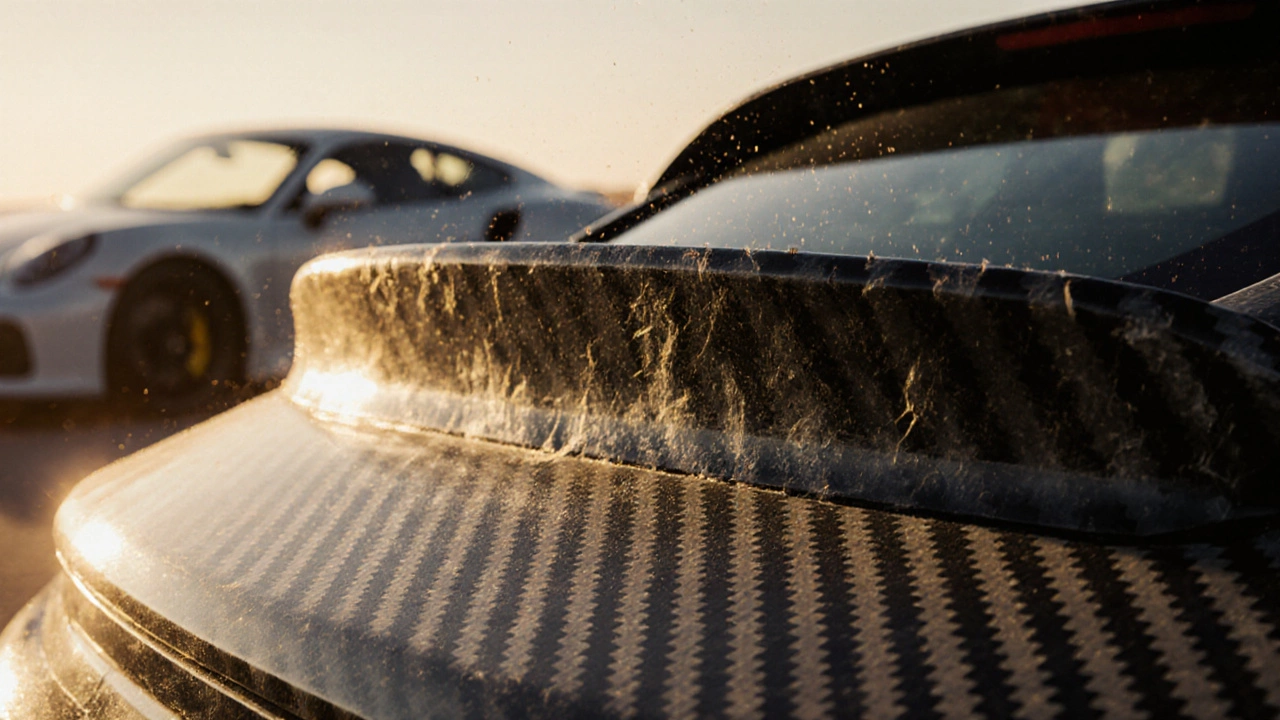When you see carbon fiber damage, a common issue on modified cars where the lightweight composite material cracks, chips, or delaminates. Also known as carbon fiber failure, it’s not just a scratch—it’s a structural concern that can spread if ignored. Unlike paint, carbon fiber doesn’t just look bad when damaged; it loses strength. Many car owners assume it’s indestructible because it’s used in race cars and planes, but real-world use—parking lot bumps, stone chips, even bad weather—can break it down over time.
What causes it? Most carbon fiber car parts, like spoilers, hoods, and side skirts, are made from woven fibers held together by resin. Also known as composite panels, they’re strong under tension but brittle under impact. A rock hit at highway speed, a dropped tool during installation, or even improper cleaning with harsh chemicals can start a crack. Once the resin breaks, moisture gets in, and the fibers start to separate. That’s when you see the white, fuzzy patches—called delamination. It’s not rust, but it’s just as serious.
Repairing carbon fiber damage, requires more than just filler or paint. Also known as composite repair, it needs proper prep: sanding, cleaning, laying new fibers, and curing with heat or vacuum. Most DIY fixes fail because people skip steps. A quick spray of gloss won’t fix a cracked spoiler—it’ll just hide the problem until it gets worse. And if you’re thinking about replacing it, remember: factory carbon parts often cost more than the whole car. That’s why knowing how to spot early damage matters more than ever.
There’s a reason so many posts here talk about carbon fiber maintenance, how to clean, protect, and inspect these parts without causing harm. Also known as carbon care, it’s not about waxing—it’s about avoiding abrasives, using pH-neutral cleaners, and checking for hidden cracks after every wash. A little attention every few months can save you hundreds. And if you’ve ever wondered why some carbon parts look fine but feel soft or flexible? That’s the resin breaking down. You can’t see it until it’s too late.
Don’t let your upgrade turn into a liability. Whether you’ve got a carbon hood, rear wing, or diffuser, understanding how carbon fiber durability, depends on proper care and realistic expectations. Also known as composite lifespan, it’s not forever. It needs work. The posts below show you exactly what to look for, what tools actually work, and what repairs are worth doing yourself versus leaving to the pros. No hype. Just what happens when carbon fiber meets real life.

Carbon fiber spoilers look great but are vulnerable to UV rays, physical impacts, chemicals, and heat. Learn what really damages them and how to protect your investment with simple, proven steps.